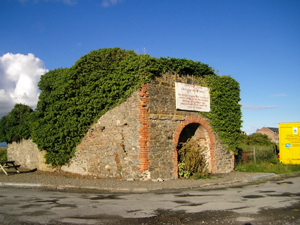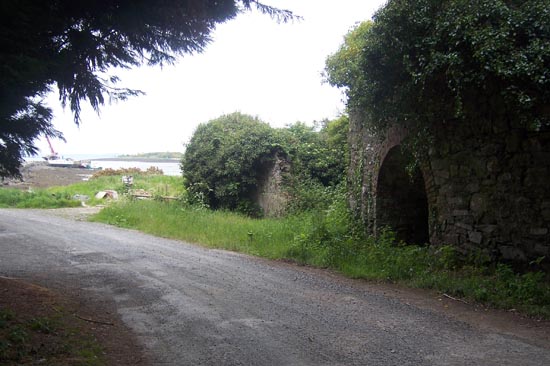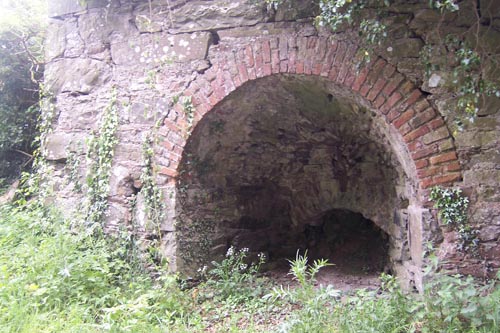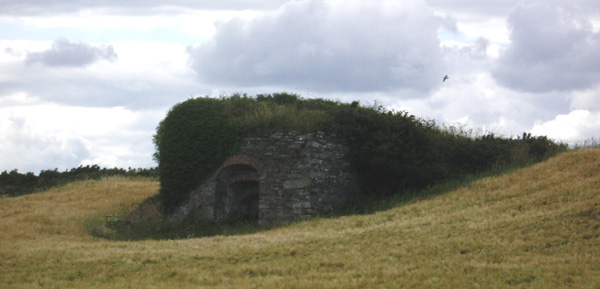| |
|
|
Lime has been
used in Ireland since before the Christian era, in Iraq there is
thought to have been lime
production as far back as 2400 BC. Lime has many uses the principal
of which is probably in agriculture where it is used to reduce the
ph value soil, today most lime used for this purpose is crushed
or powdered limestone which is much cheaper to produce than burnt
lime, which is the product of a kiln in which alternative layers
of limestone and fuel, this can be coal, wood or even peat burnt
at high temperature, in this process for every ton of lime produced
over a ton of carbon dioxide is released, although some of it is
reabsorbed when the lime is slaked. to have been lime
production as far back as 2400 BC. Lime has many uses the principal
of which is probably in agriculture where it is used to reduce the
ph value soil, today most lime used for this purpose is crushed
or powdered limestone which is much cheaper to produce than burnt
lime, which is the product of a kiln in which alternative layers
of limestone and fuel, this can be coal, wood or even peat burnt
at high temperature, in this process for every ton of lime produced
over a ton of carbon dioxide is released, although some of it is
reabsorbed when the lime is slaked.
The use of lime for agriculture purposes
began in Ireland in the 12th century, possibly a Norman introduction,
dressing soil with lime was in widespread use by the mid 1600's.
County Cork seems to have had a prodigious number of kilns at the
end of the 18th century it is thought the county had somewhere around
23,000 in operation which amounts to one for every 80 acres, if
these figures are correct the industry must have employed a considerable
number of people. |
Lime kilns across the country basically followed
the same design consisting of an egg shaped chamber 3 to 7 metres in diameter,
with a hole at the bottom allowing access of air for combustion and the
removal of the quick lime, this was constructed  of
bricks inside a square stone tower the height of which varied and may
have been between 4 and 8 meteres high. The kiln was often built into
a bank allowing the fuel and limestone to be easily loaded into the top
of the kiln. This was a batch process each burning may have taken as much
as four days, so allowing for filling, burning, cooling and removal each
batch probably took a week, for the process to work efficiently it was
necessary that the kiln attained a temperature of 900 degrees c. Later
continuous kilns came to be used, in these fuel and limestone were added
continually, today some 3.5 million ton of lime is produced in Ireland
principally for the cement industry, modern kiln's consist od a horizontal
rotary chamber in which the limestone is introduced at one end the quicklime
emerging at the other as the of
bricks inside a square stone tower the height of which varied and may
have been between 4 and 8 meteres high. The kiln was often built into
a bank allowing the fuel and limestone to be easily loaded into the top
of the kiln. This was a batch process each burning may have taken as much
as four days, so allowing for filling, burning, cooling and removal each
batch probably took a week, for the process to work efficiently it was
necessary that the kiln attained a temperature of 900 degrees c. Later
continuous kilns came to be used, in these fuel and limestone were added
continually, today some 3.5 million ton of lime is produced in Ireland
principally for the cement industry, modern kiln's consist od a horizontal
rotary chamber in which the limestone is introduced at one end the quicklime
emerging at the other as the  chamber
slowly rotates, there are about 10 of these kilns in operation in Ireland. chamber
slowly rotates, there are about 10 of these kilns in operation in Ireland.
Lime can also be produced by burning sea shells,
in Samuel Lewis' Topographical Directory
of County Down, 1834 he describes Wood Island in Strangford Lough below.
'Wood island, also in the parish of Tullynakill,
containing 16 acres, and on which are large beds of shells, from 50 to
60 feet above the level of the sea, that are converted into excellent
lime by burning'
Limestone
(calcium carbonate) is a sedimentary rock produced largely in the marine
environment from the shells of sea creatures over geologic time periods.When
heated (or “burnt”) the limestone is converted to quicklime
(calcium oxide) and a gas (carbon dioxide). Quicklime will react with
water to give “slaked lime” (calcium hydroxide).
Good example of a lime kiln,
Southern Ards peninsular County Down

See also early Irish farms
and the kelp industry.
|
|


 of
bricks inside a square stone tower the height of which varied and may
have been between 4 and 8 meteres high. The kiln was often built into
a bank allowing the fuel and limestone to be easily loaded into the top
of the kiln. This was a batch process each burning may have taken as much
as four days, so allowing for filling, burning, cooling and removal each
batch probably took a week, for the process to work efficiently it was
necessary that the kiln attained a temperature of 900 degrees c. Later
continuous kilns came to be used, in these fuel and limestone were added
continually, today some 3.5 million ton of lime is produced in Ireland
principally for the cement industry, modern kiln's consist od a horizontal
rotary chamber in which the limestone is introduced at one end the quicklime
emerging at the other as the
of
bricks inside a square stone tower the height of which varied and may
have been between 4 and 8 meteres high. The kiln was often built into
a bank allowing the fuel and limestone to be easily loaded into the top
of the kiln. This was a batch process each burning may have taken as much
as four days, so allowing for filling, burning, cooling and removal each
batch probably took a week, for the process to work efficiently it was
necessary that the kiln attained a temperature of 900 degrees c. Later
continuous kilns came to be used, in these fuel and limestone were added
continually, today some 3.5 million ton of lime is produced in Ireland
principally for the cement industry, modern kiln's consist od a horizontal
rotary chamber in which the limestone is introduced at one end the quicklime
emerging at the other as the  chamber
slowly rotates, there are about 10 of these kilns in operation in Ireland.
chamber
slowly rotates, there are about 10 of these kilns in operation in Ireland.